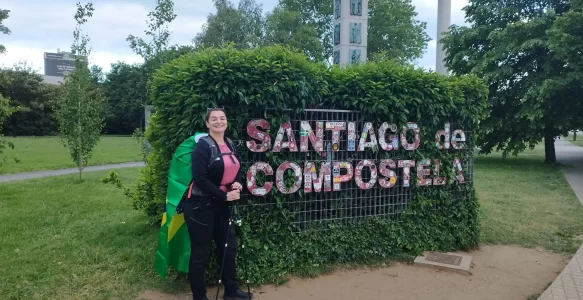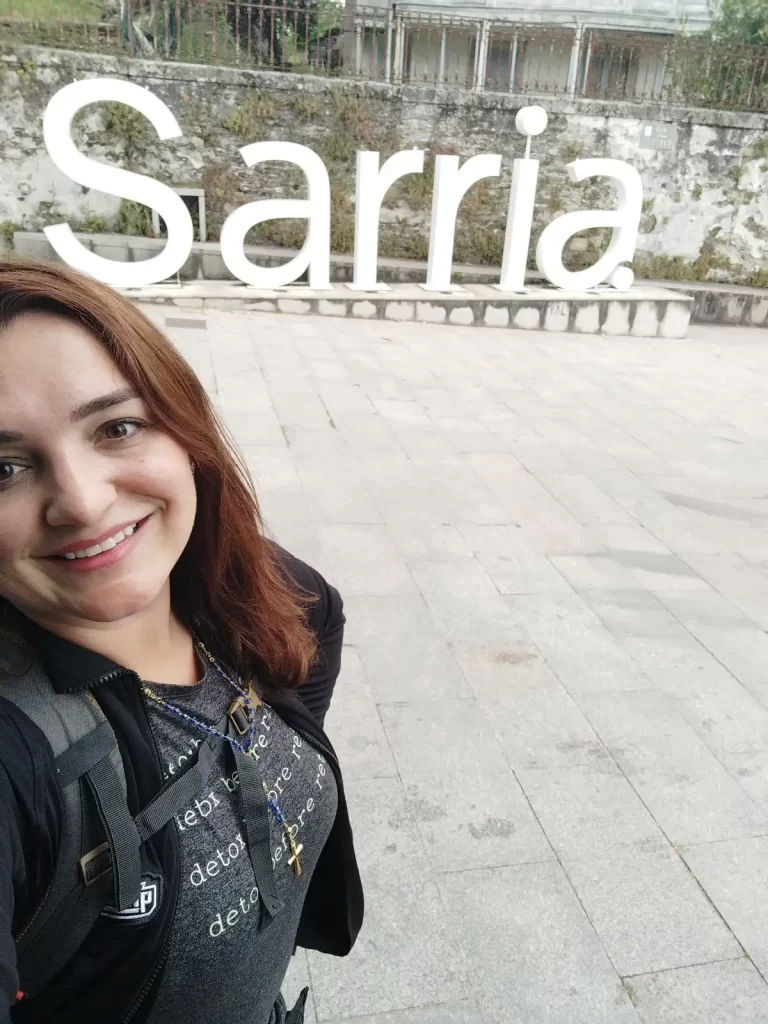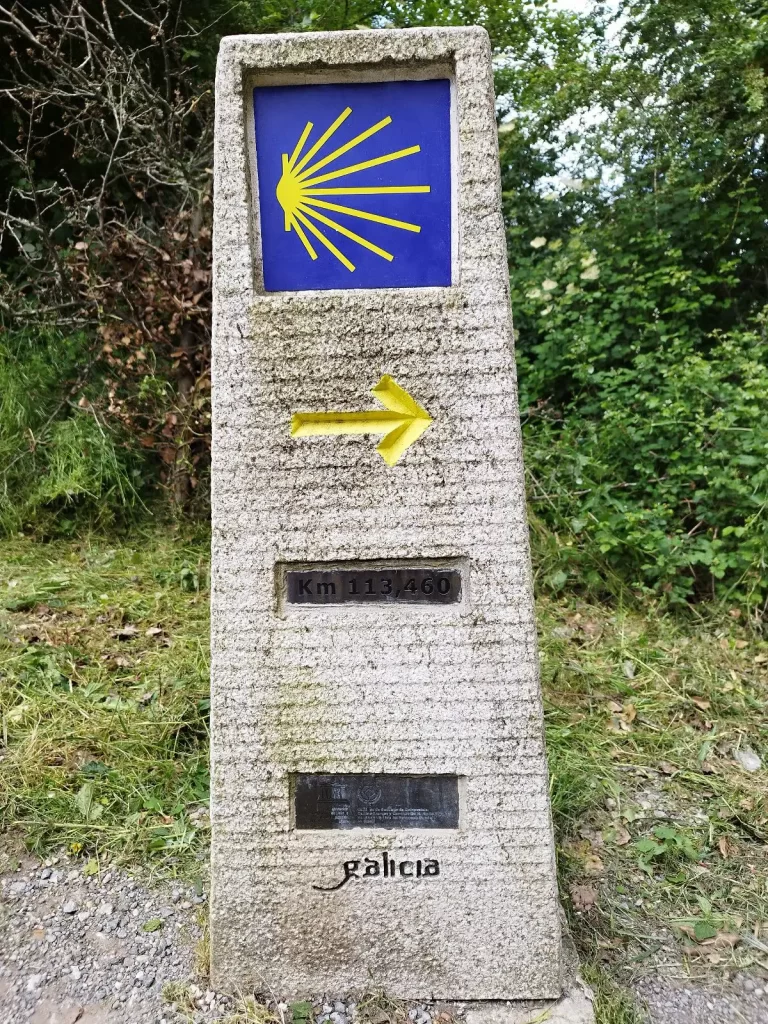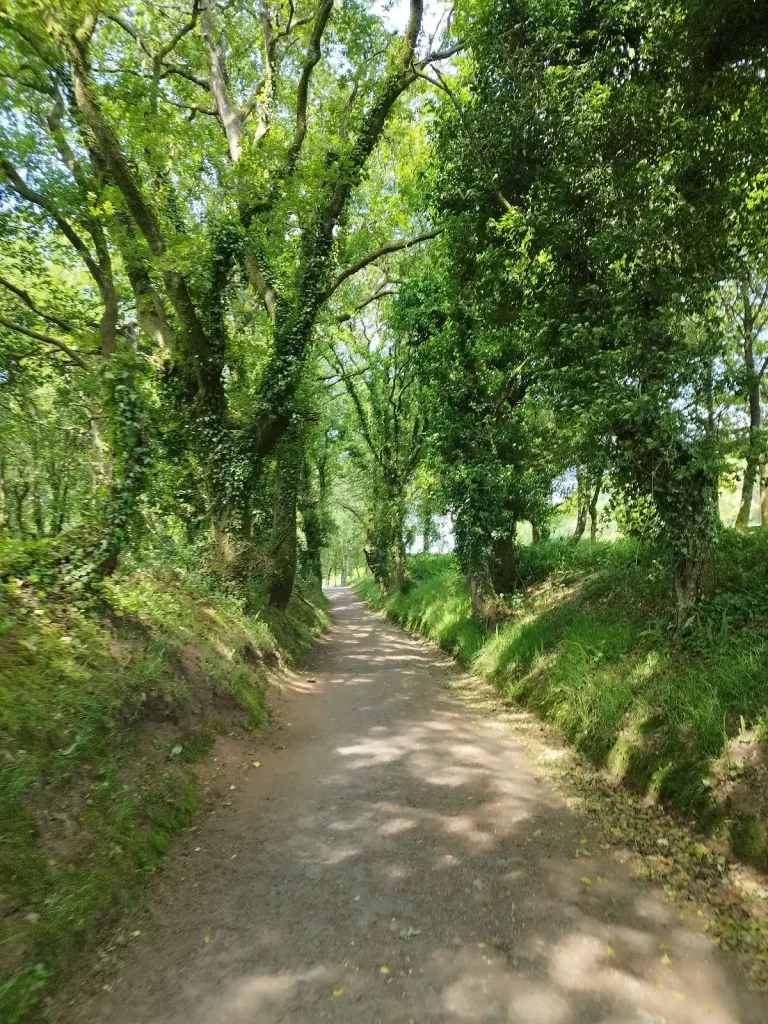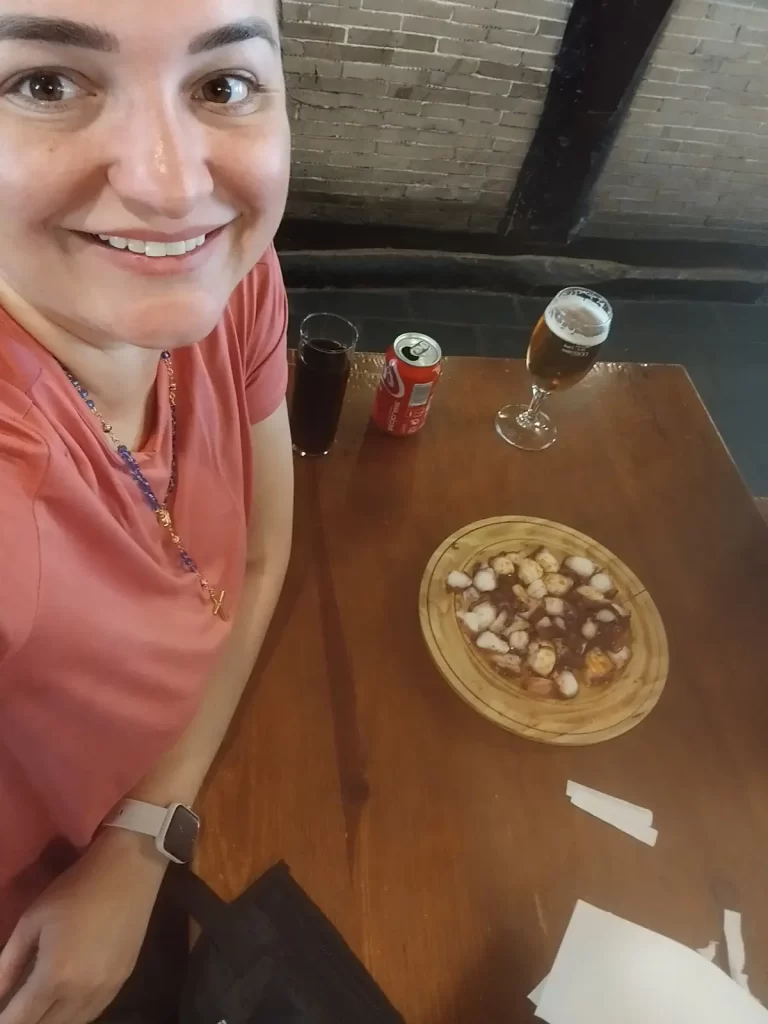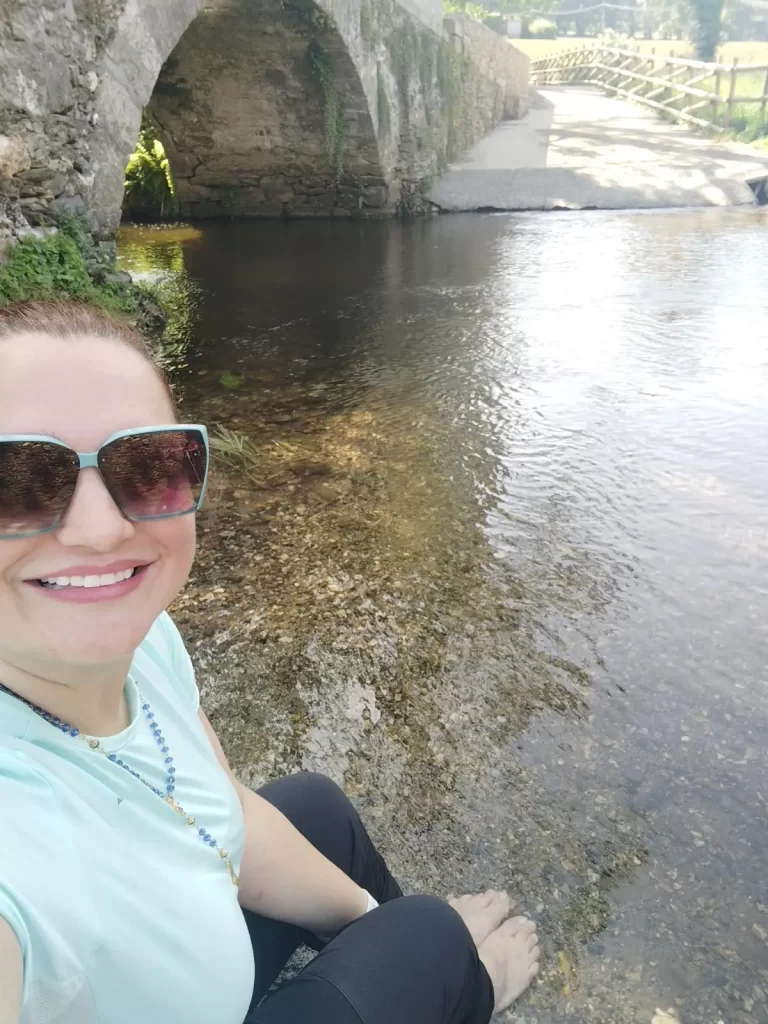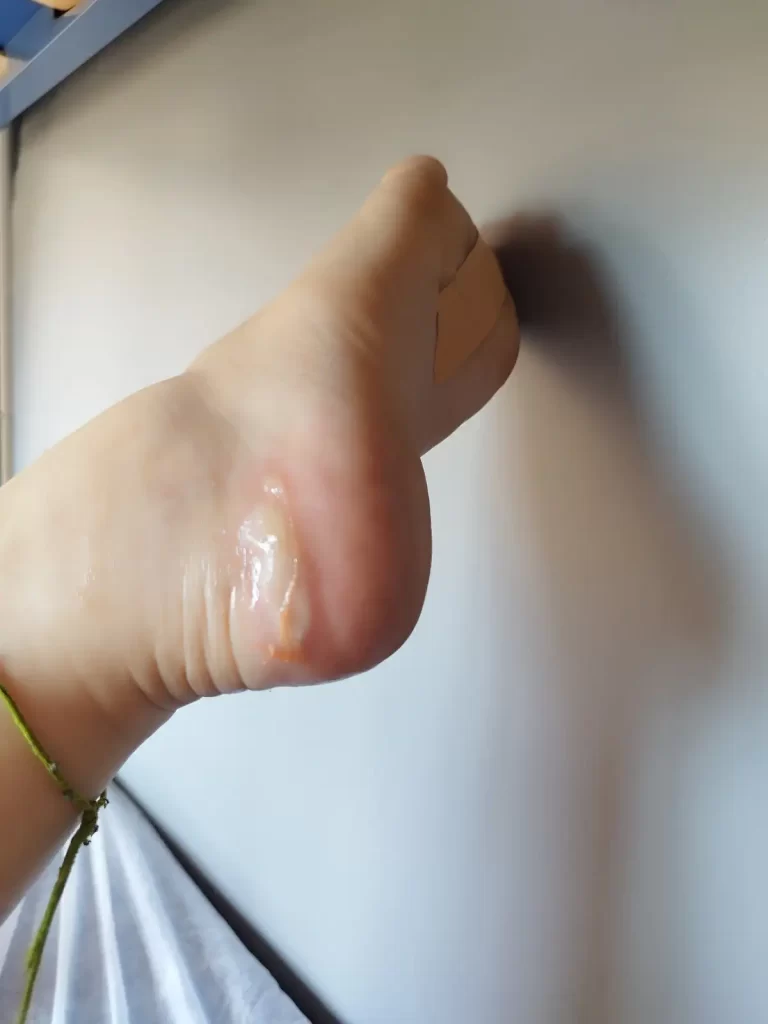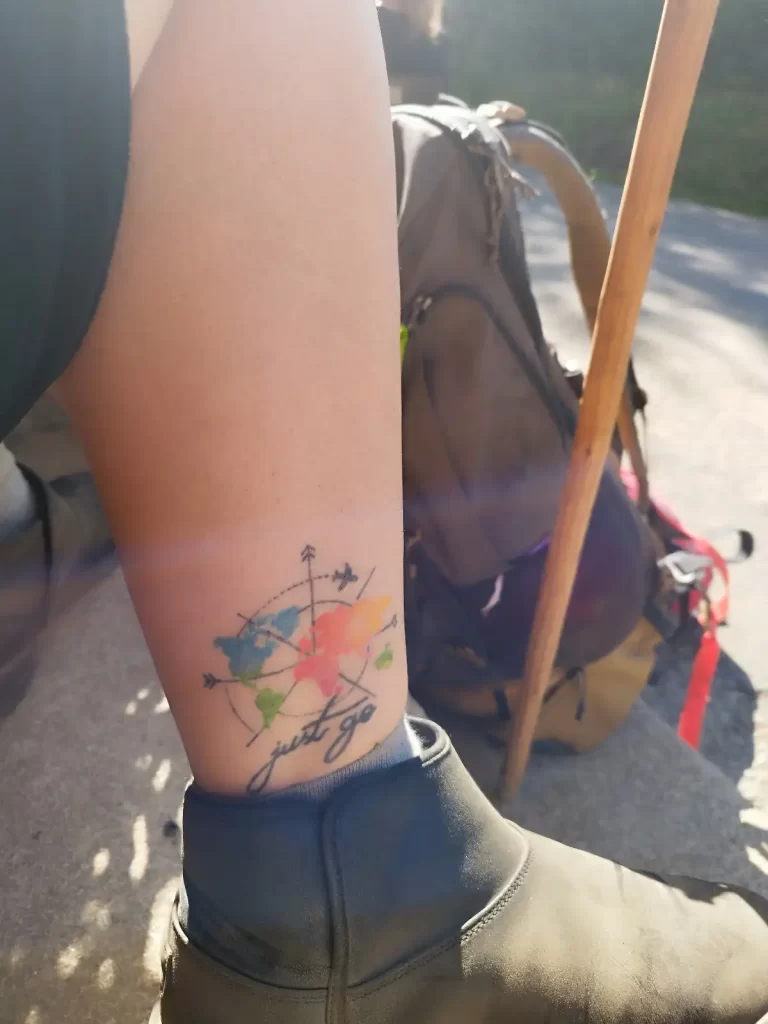Surviving before the journey…
This will be a different kind of text from the ones I’ve written before. I want to share my personal experience of walking the Camino de Santiago. And to help you understand the choices I made along the way, I need to tell you a little about myself.
I was born with a malformation in both knees, and despite undergoing numerous surgeries, I still live with daily pain. Long walks are far from medically advisable—in fact, I was told not to do them at all. But the Camila who learned to live with pain also learned to pursue her dreams.
Walking the Camino de Santiago (The Way of St. James) had been a dream of mine since childhood, ever since I read Paulo Coelho’s books. And what better opportunity to do it than now, living in Spain?
So, I made up my mind. I would walk the 120 km from Sarria to Santiago, but knowing my limits, I adjusted my plan. The route is usually done in five stages over five days, but I decided to break it down into smaller sections, extending my journey fom five to eight days—arriving in Santiago de Compostela on my birthday.
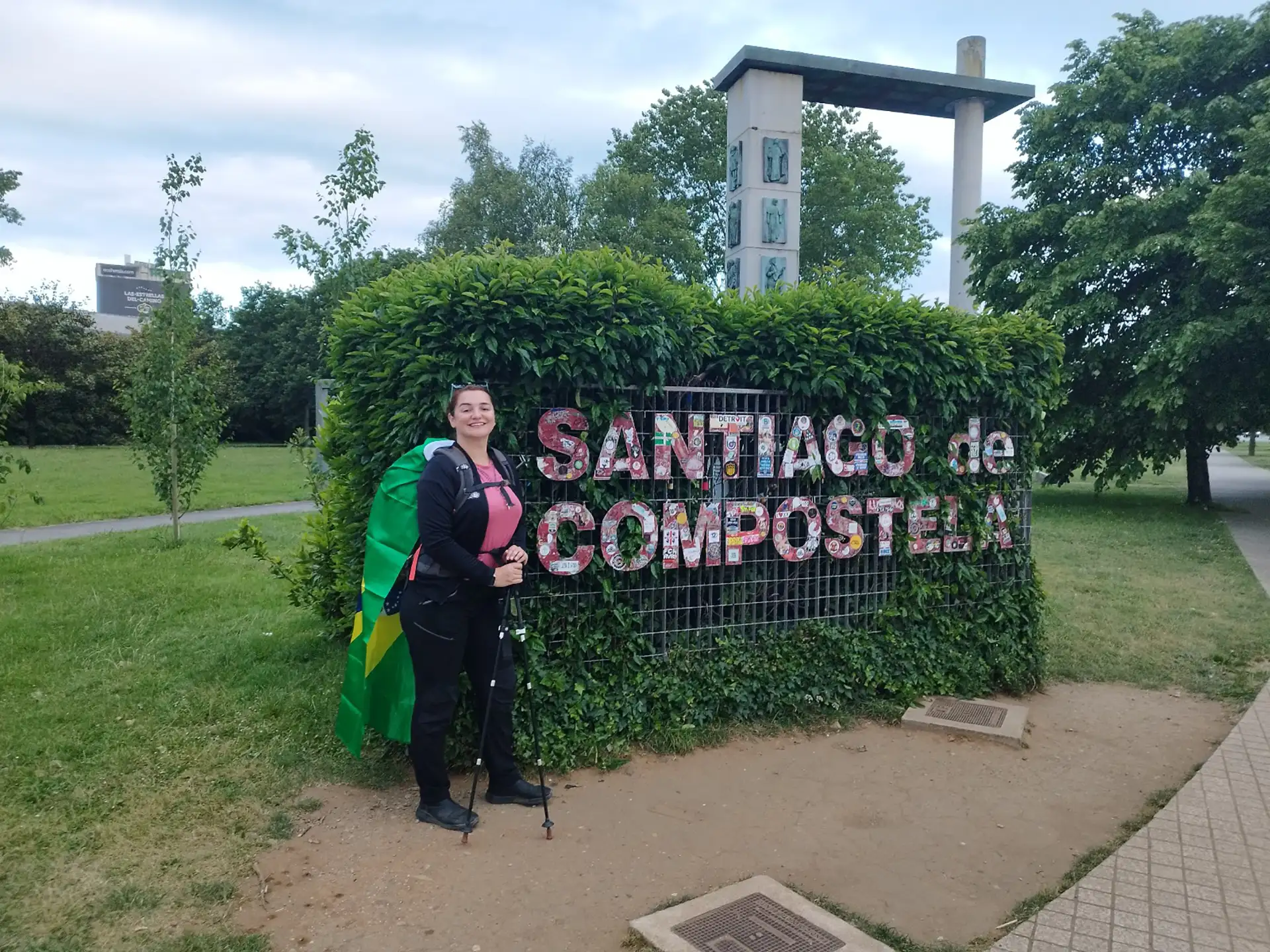
But before I even talk about the Camino de Santiago itself, I have to say—I barely made it there! I didn’t take any time off and, to fit all my days off into one month, I ended up making the crazy decision to work ten days in a row.
The night before my trip, I wrapped everything up and, of course, threw a few last-minute things into my backpack (who hasn’t?). I flew from Madrid to Santiago, arriving close to midnight. I stayed at Monte do Gozo, one of the most famous hostels on the Camino, but only for that night, as my adjusted itinerary wouldn’t include an overnight stop there later. The plan was simple: sleep as much as possible because, the next morning, I’d set off early for Sarria, ready to begin my journey.
Day 1 – Sarria to Ferreiros (15km)
I started the day by taking a BlaBlaCar to Lugo, followed by a bus to Sarria. The journey was exhausting, especially after such an intense few days. So, here’s a tip: pay a little extra and take a direct bus from Madrid to Sarria. It’s a six-hour ride, but it’s much more convenient, and you can even get some sleep.
Once in Sarria, I felt a bit lost trying to find where to get my pilgrim’s credential—a must-have to receive the Compostela and stay in public albergues. Eventually, I found it at Santa Marina Church, perched at the top of the town—a lovely little place, by the way.
The Camino is very well marked, with yellow arrows everywhere guiding the way. The route was stunning but tough—almost 15 km of steep inclines! For someone as out of shape as me, it was a real challenge.
After four hours, I finally arrived in Ferreiros, completely exhausted… Since I had left Sarria past midday, I arrived quite late. All I could do was take a much-needed shower, have the pilgrim’s menu, and head to bed early.
I stayed at the public albergue, where I paid €8 and was given a disposable sheet. In other words, no blankets. So, if you’re planning to do the Camino, bring a sleeping bag—or, in my case, a duvet cover, which worked just as well and was much lighter hahaha.
The pilgrim’s menu is an affordable meal served in restaurants along the Camino de Santiago, typically including a starter, main course, dessert, and drink.
Day 2 – Ferreiros to Gonzar (17km)
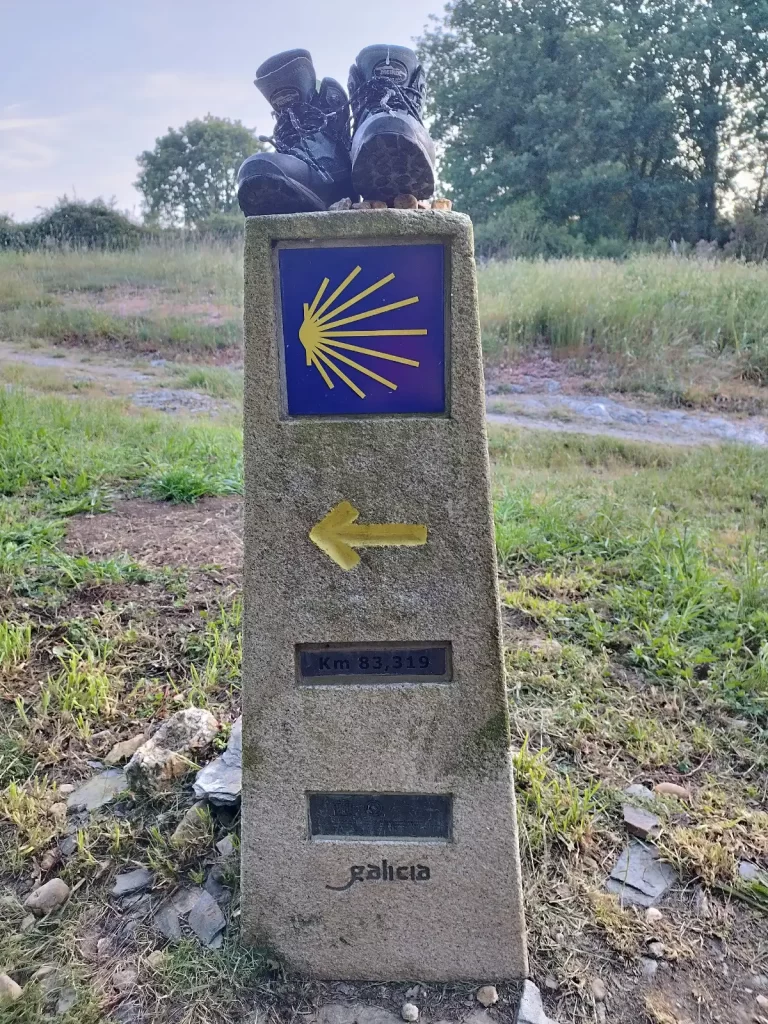
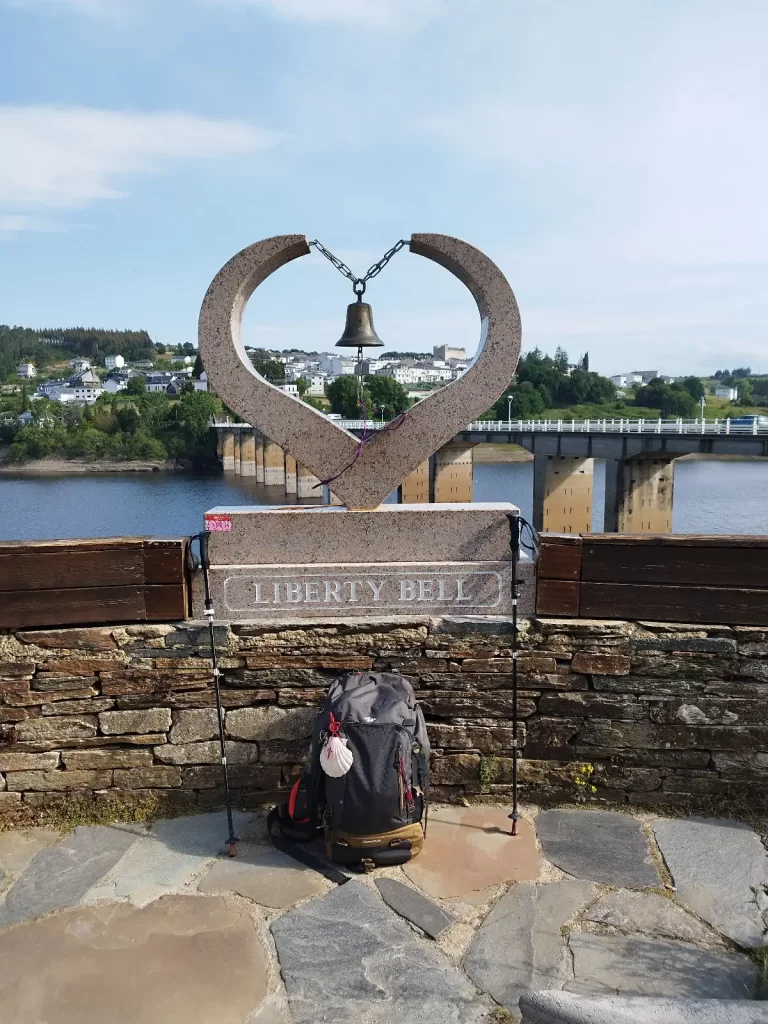
The route was longer but much easier. Until Portomarín, there were no hills, just a steep descent at the very end, where I had to hold onto the walls for support. Apart from that, it was fine. If you want to avoid this section, when you reach Portomarín, you’ll find a fork in the path between the original route and the contemporary route. The steep slope is on the original path, so if you have knee issues, I’d recommend the alternative. It even shaves off 100 metres. Haha.
I decided to walk in silence, without music or conversations, to fully connect with the nature around me. I got so immersed that I missed a turn and took the wrong path. Haha. But it led me to an incredible view. Extra tip… Allow yourself to get lost for a while—make the journey your own. Just make sure to have your map saved so you can find your way back. Haha.
Several times along the way, I thought about stopping. My feet were covered in blisters, and the pain was so intense that even putting them on the ground was a struggle. But I kept going… In the last 4 km, I took a break for a quick picnic and then carried on in flip-flops, pushing forward step by step.
When I arrived in Gonzar, I took a nap at the public albergue and was later rewarded with an amazing dinner. The pilgrim’s menu (€13) was so generous and well-prepared. Absolutely worth it!
Day 3 – Gonzar to Palas de Rei (17km)
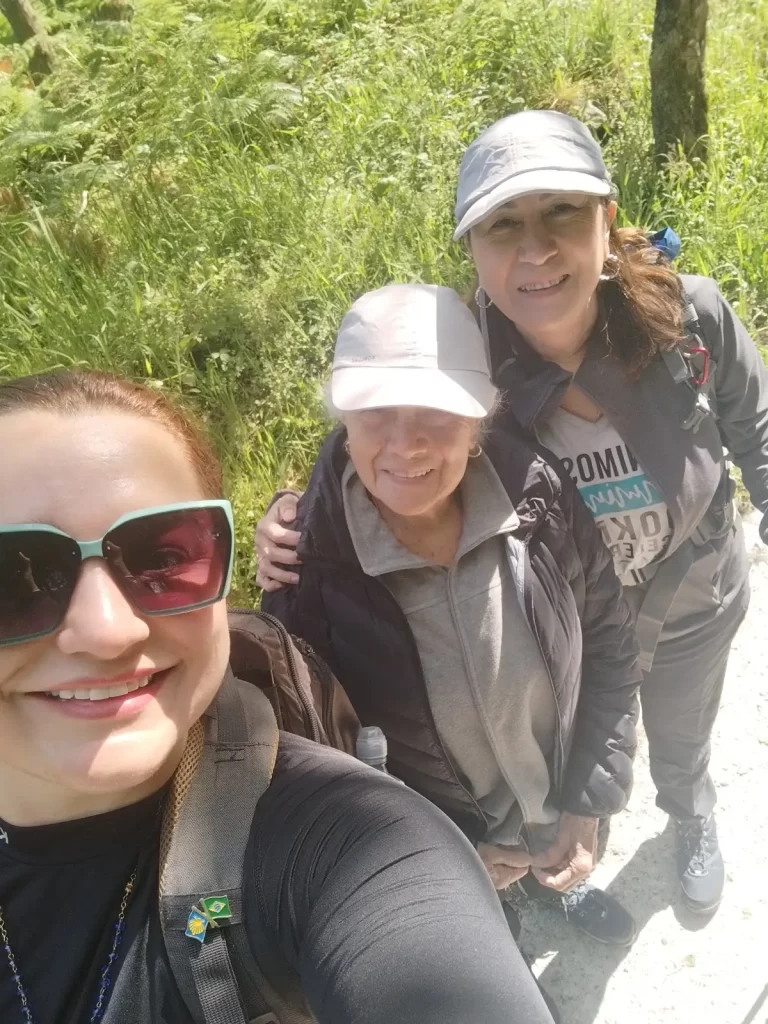

I have to admit—I spent the whole night thinking about calling a taxi, hitching a ride, or finding any way out. And to be honest, those thoughts stayed with me throughout the day. What had started as a simple blister on the sole of my foot had turned into a deep wound, cutting into the flesh and hurting like hell.
I spent part of the journey crying from the pain, part of it counting my steps, and part of it singing. Haha. And music really does make a difference. While singing, I met an Italian man who asked me to sing louder so he could record it. He wished me all the best and went on his way. Along the path, I also met a Mexican woman who had come with her daughter to walk 90 km in celebration of her 90th birthday—such an inspiration. Every now and then, older pilgrims would pass by, noticing my limp and slow pace. They would stop to check if I was okay and encourage me to keep going.
And on this day, more than ever, the Camino made it clear that it would unfold as it was meant to. I had planned to walk it alone, keeping interactions with other pilgrims to a minimum. But I must admit—if it weren’t for the people around me that day, I might not have had the strength to finish.
Throughout the journey, I listened to daily reflections, and that day’s theme was Fear. “Do not be afraid, for God is with you.” Fear came, many times, but I kept repeating to myself that there was nothing to fear and that I wouldn’t sabotage myself.
In the end, I arrived feeling incredibly proud for not giving up. Once again, I had pushed through the pain and won. It was still there, throbbing, reminding me that winning one battle didn’t mean the war was over. But I ended the night with the certainty that I would overcome—both the Camino and myself.
I had planned to walk it alone, keeping interactions with other pilgrims to a minimum. But I must admit—if it weren’t for the people around me that day, I might not have had the strength to finish.
Day 4 – Palas de Rei to Melide (14.5km)
Imagine someone waking up excited because their foot wasn’t hurting as much anymore. That was me… and the excitement didn’t last long. Haha.
I left Palas de Rei around 8 a.m., as public albergues have a checkout time limit. Since the route to my next stop was shorter, I decided to leave later so I would arrive just in time for lunch.
And why was I so eager for lunch? Because Melide, my destination for the day, is famous for its octopus. But before that, the wound on my foot fully opened, and the pain became unbearable. I made it through with a lot of sweat and tears.
Apart from the issue with my foot, I didn’t find the path too difficult. The first day was all uphill, the second had one brutal descent, but the third and fourth days weren’t too steep. So, here’s a tip: if you’re planning to walk the Camino, start taking care of your feet in advance. I had read about it, but being stubborn, I didn’t think it would happen to me. I was so wrong. It ended up hurting even more than my messed-up knees.
Finally, I arrived in Melide, with only 52 km left to complete the Camino. I was feeling a mix of emotions—worried that my foot might cause further strain, anxious to reach the finish line, hopeful that I’d manage to complete it without sabotaging myself, proud of my perseverance, and a whole whirlwind of other feelings.
Now, about the octopus 🐙: I went to Pulpería Garnacha, a well-rated place, but I wasn’t too impressed. Then I tried Pulpería Ezequiel, and that was a completely different experience—the octopus was cooked to perfection, the portion was generous, and the seasoning was spot on! I was so full I could barely walk back to the albergue.
Day 5 – Melide to Arzúa (14.5km)
The day’s reflection was “God in my journey.” I spent the walk thinking about how grateful I am to Him. He knows my weaknesses, my flaws, my struggles, my excuses, and my sins. Yet, He is always there and believes in me.
This stretch of the Camino wasn’t without pain, but it felt much lighter. I was confident about reaching my destination, and the obstacles were overcome one by one. Before I knew it, I was already close to the end of the day’s walk.
After Melide, the number of people on the path was overwhelming. At times, buses would drop off groups who would walk just a few kilometres. The good thing was that by the time I reached my stop for the day, they had disappeared just as quickly as they had arrived. Haha.
I walked this stretch with two Brazilian women, one of them from Vitória—the city where I was born… Such a small world. We made a pit stop in Ribadiso for a snack and to soak our feet in the river—freezing cold, but absolutely beautiful. And, in the end, the cold water actually helped.
The Camino was full of Brazilians. I met another pilgrim from the south of Brazil who helped me with my foot, gave me some medicine, and even some sheep’s wool to put inside my sock for protection.
When I arrived in Arzúa, I went to the medical centre because two blisters had become infected. The doctor simply said, “Keep walking, and take care of it when you get home.” Haha!
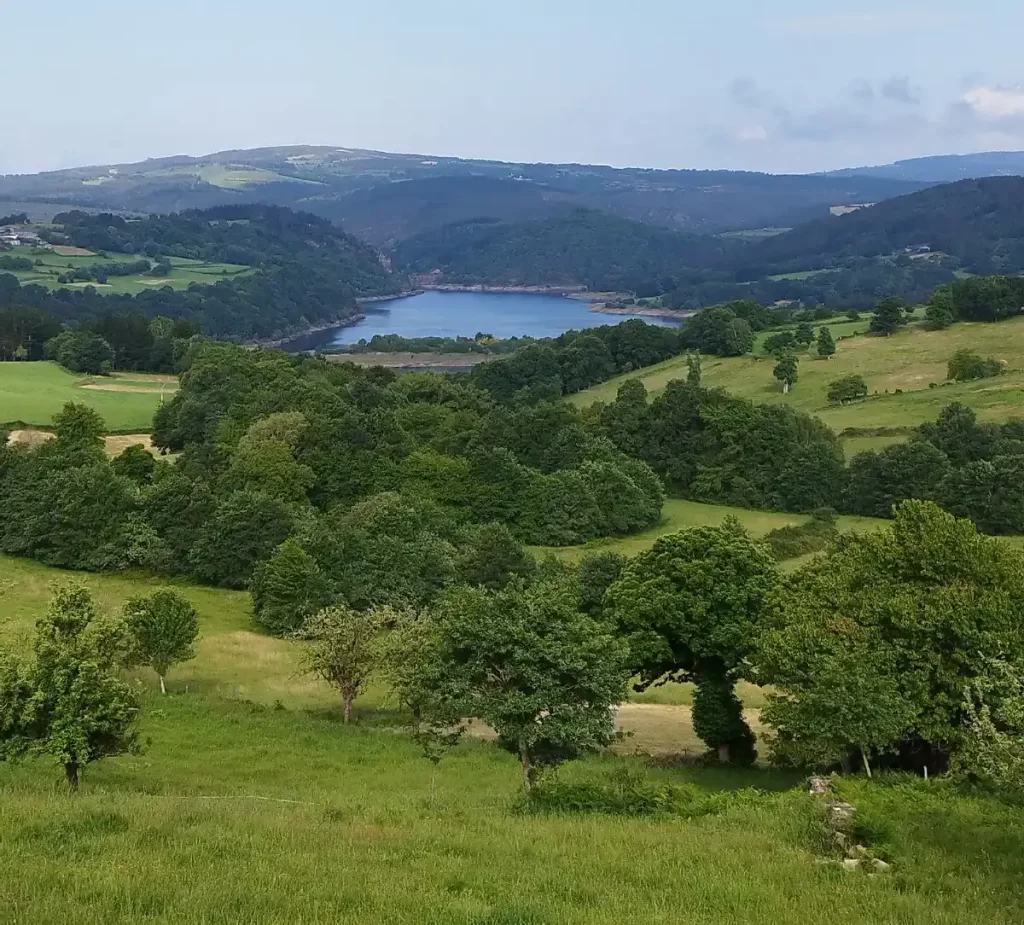
Day 6 – Arzúa to Santa Irene (16.5km)
The day began with morning prayer, and the reflection for the day was about dreams and goals.
This is a very sensitive topic for me. Since deciding to walk the Camino de Santiago, I had come to a sad realisation—this was the fulfilment of my last dream. I tried to think of others, but the truth was, I had none left. There were things I wanted to do, sure, but not true dreams. Dreams come from within, and they push us forward.
I had already achieved many dreams, while others had been lost or abandoned along the way. But what now? I didn’t want to go through life feeling indifferent, as if I were just living on borrowed time, accepting whatever came my way. That became the biggest reflection of my journey. And I hoped that by the time I reached Santiago, I wouldn’t just discover new dreams for myself—I wanted to understand His dreams for my life as well.
I started the day in tears, deep in thought, but also with incredible determination. I pushed through the pain and walked at a strong pace. I would have gone even faster if I hadn’t soaked my boots halfway through and been forced to switch to my flip-flops—which then broke 1 km before reaching my planned stop.
But everything happens for a reason. I was so motivated that I probably would have ignored any medical advice and pushed on for a few extra kilometres. In the end, it was better this way!
I ended up arriving more than an hour before the hostel opened because I had been walking so fast. So, I had no choice but to stop at a bar, make a video call to wake up my family—who were five hours behind my time zone—grab some croquetas, and wait for time to pass.
There was so little left, just two more days… Both with short distances. I felt excited, happy, and proud… But still wondering what new dreams I would find along the way.
Day 7 – Santa Irene to Lavacolla (12.5km)
And just like that, the seventh day began. I woke up feeling much more excited—perhaps the pain was finally making room for the thrill of reaching the end.
That excitement didn’t fade, even when faced with a massive uphill climb. At one point, I was convinced the plot twist of the Camino was that we’d end up so high that we could just hop onto a passing plane—the hill was right next to the airport! Haha.
Today’s reflection was “The Camino as a metaphor for life.”
I walked this stretch with a Brazilian pilgrim, and we had some deep conversations. We had faced similar struggles in life but also recognised strengths in each other. In the end, after just under three hours, we had reached our stop for the day—though we had made plenty of stops for photos, coffee, and stamps along the way. Haha.
We almost didn’t get a spot at the hostel, managing to grab the last two available beds. If there had been none left, we would have had to walk a few more kilometres. After dinner, I got everything ready to leave early the next morning. The final stretch would be a journey I needed to take alone—just thinking about the arrival was enough to bring tears to my eyes.
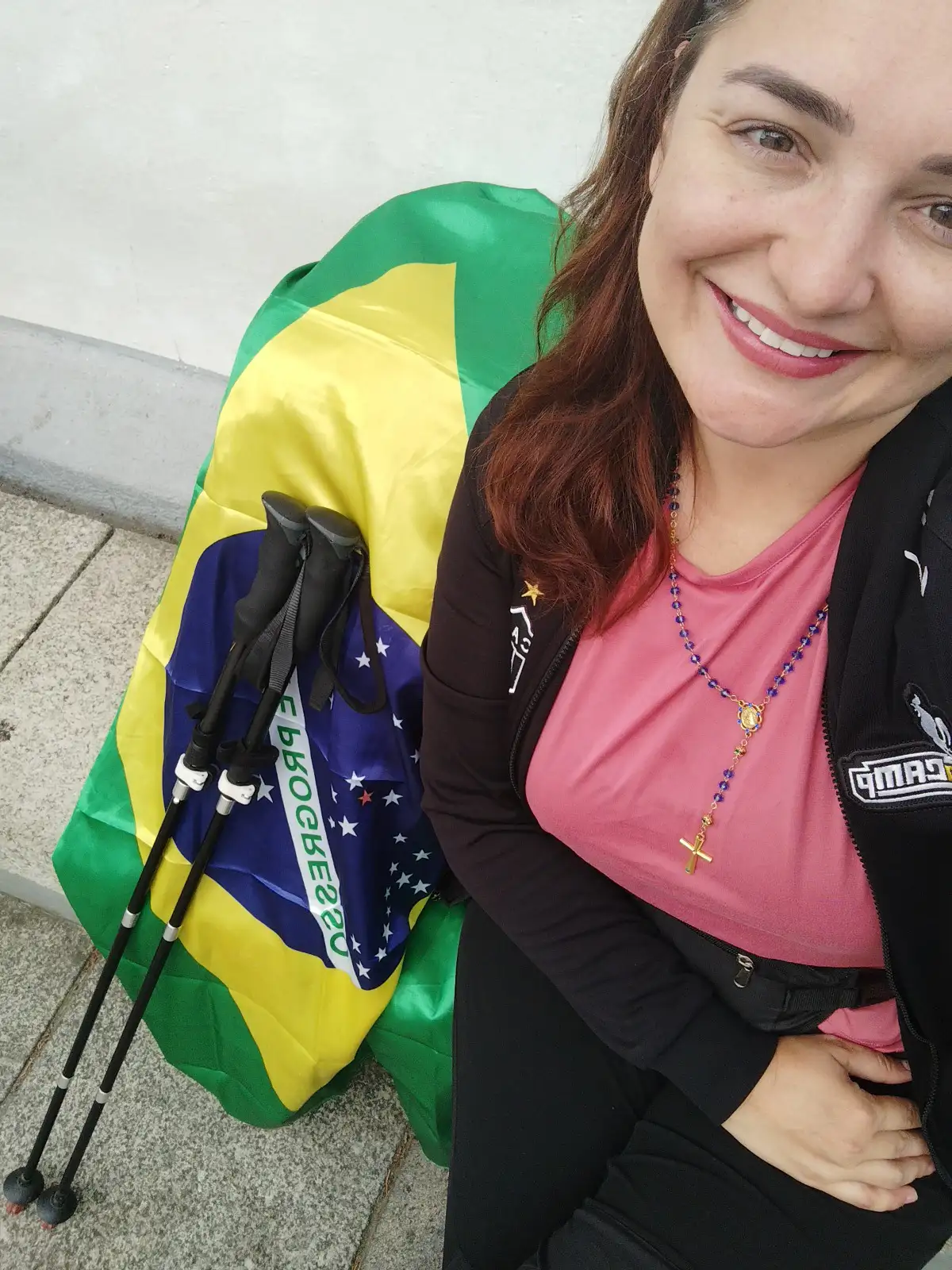
Day 8 – Lavacolla to Santiago de Compostela (10.5km)
My birthday! And there could be no better gift. Emotion took over, and despite the pain, I pushed forward. I walked faster than ever, even as every ache in my body seemed to resurface—as if they, too, wanted to say goodbye to the Camino.
Limping, but moving in sync with the rhythm of my heartbeat, I kept going. With each step, as the cathedral and the finish line drew closer, my heart pounded harder, and my pace quickened.
I couldn’t believe it. I did it! I conquered the Camino… and, most importantly, I conquered myself. The moment I reached the square, I broke down. I felt strong, powerful, owning a strength I often forget I have.
By the end, I was swollen, sore all over, my face puffy and covered in red marks. I had every reason to feel awful. But instead, I was filled with pride—for myself, for the woman I’ve become, and for the woman I continue to become every day. Nothing could take that away from me.
I hope this feeling stays with me. I know life isn’t easy, but now I have one more piece of proof that no matter what—I can do it.
After arriving, I headed straight to the Xunta Municipal to collect my certificate and Compostelana. Oh, how beautiful it was!
From there, I went to the cathedral. I arrived two hours before mass and managed to sit in the front row (only behind the seats reserved for the women assisting with offerings and readings). On top of a beautiful service, I was lucky enough to witness the Botafumeiro in action—thank you, wealthy American tourists, for paying for it!
Reaching that place meant more than just completing a route—it meant overcoming myself. It was a day of gratitude, learning, and pride.

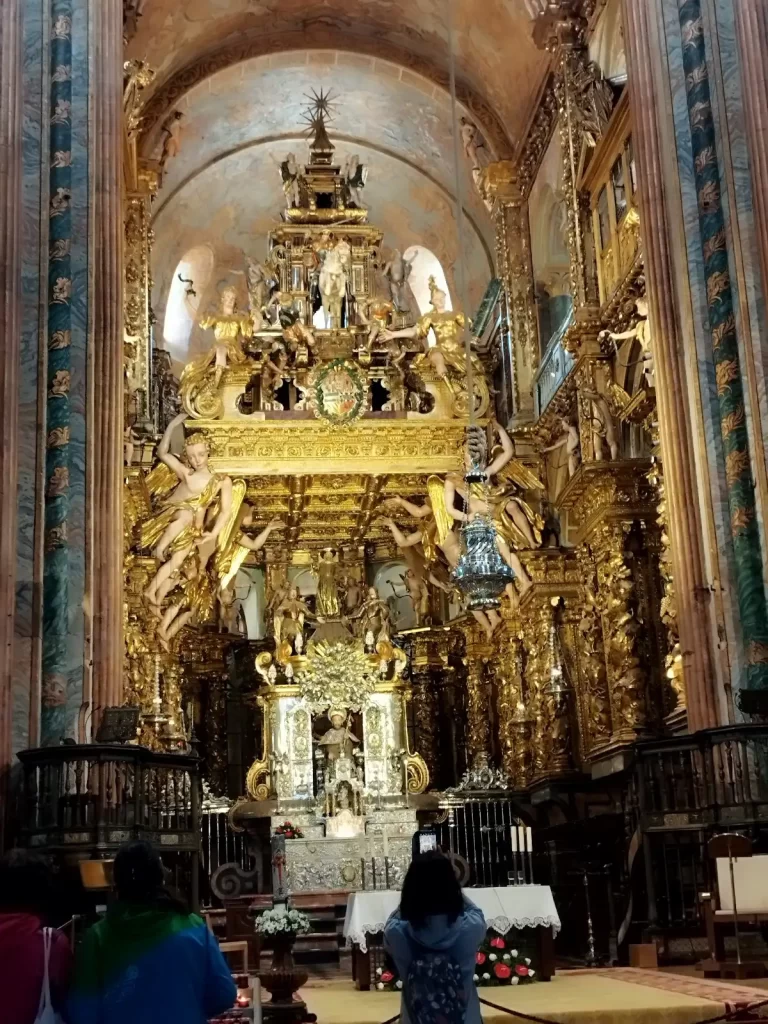
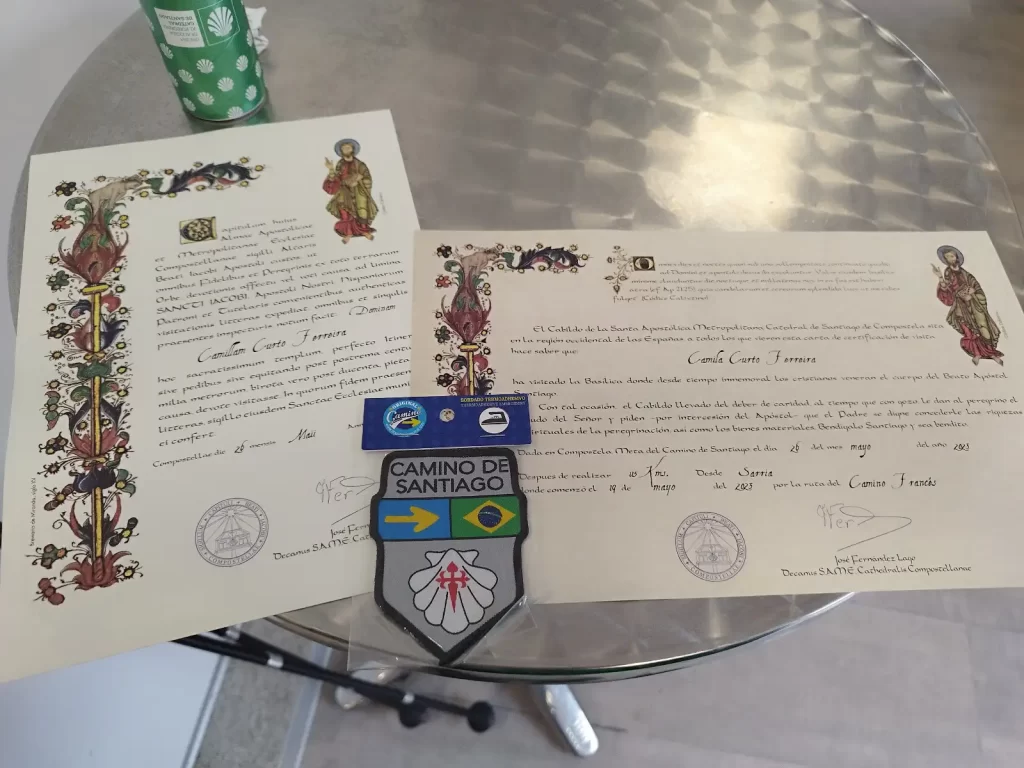
Tips for those planning to walk the Camino de Santiago
When to go?
Spring and autumn are the best seasons, as they avoid the extreme heat of summer and the harsh cold of winter. I walked in the second half of May, and the weather was perfect. Mornings were a bit chilly, but during the day, temperatures were just right.
Check the weather forecast. I was lucky—it only rained after I had already arrived in Santiago. Walking in the rain makes everything more difficult. If your shoes already cause blisters, imagine dealing with wet shoes on top of that.
What to pack?
✅ A lightweight backpack (no more than 10% of your body weight)
✅ A sleeping bag or duvet cover
✅ Light, comfortable clothing
✅ A jacket – mornings can be quite chilly, even if it’s not winter
✅ Sunscreen, a cap, and sunglasses
✅ Vaseline or foot cream (do NOT underestimate blisters)
✅ Flip-flops for post-hike moments
✅ A basic first-aid kit
✅ Comfortable, well-worn shoes
✅ A power bank
✅ Some cash – some places have issues with card machines
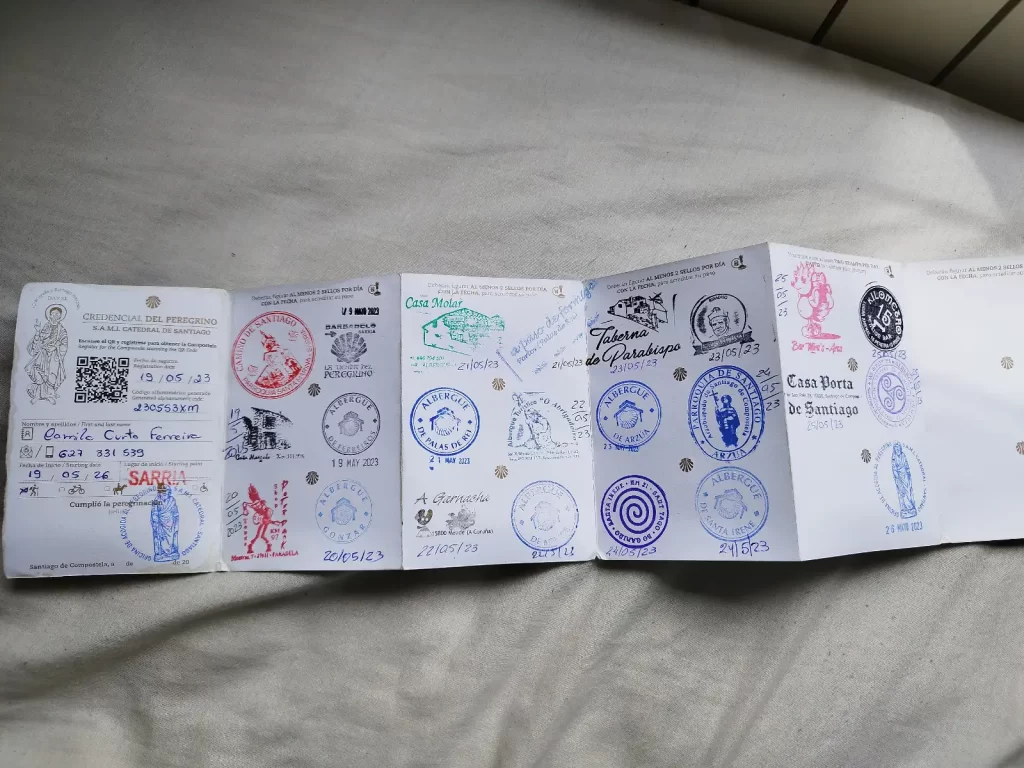
Extra Tips
- If possible, get your pilgrim credential in advance.
- Download the Camino map on Google Maps.
- Always collect at least two stamps per day.
- If you can, keep your plan flexible and listen to your body.
- The Camino is best enjoyed without rushing—embrace the journey!
Walking the Camino de Santiago was one of the most incredible experiences of my life. If you’re thinking about taking on this journey, go with an open heart. You’ll face challenges, but you’ll also find strength in the most unexpected places.
Ultreia y buen camino!

